The next day Perriard talked to Berdoz. There was a meeting of the minds and Perriard became CEO and a partner in the fledgling company. Or rather, two companies. HYT has a sister company, Preciflex, which has the same owners and, like it, is based in Neuchâtel. HYT is strictly a watch company; Preciflex handles R&D and performs some manufacturing processes for the fluid modules.
One of the first tasks the company faced was persuading suppliers in the watch industry to work with HYT/Preciflex. “No one knew Lucien or Patrick,” Perriard says. Him they did know, from his previous watch-industry jobs. Perriard signed up Chronode, then five years old. “We had to create a custom-made movement that provides sufficient energy to guide the liquid system technology,” Perriard says.
Thanks to Berdoz and Vouillamoz, the company had access to personnel outside the watch industry, such as engineers and chemists. HYT/Preciflex hired Bruno Moutarlier, former industrial director for Audemars Piguet (and now CEO of Swiss movement maker Dubois Dépraz) to lead the development project, coordinating the work of the engineers and chemists at Preciflex and the watchmakers at Chronode.
As an old Swiss-watch-industry hand, Perriard knew where to get the traditional watch parts HYT needed: cases, crystals, and the like. But for the fluid-module components, HYT would have to venture into terra incognita. Sourcing the bellows and glass capillaries was especially nettlesome, Perriard recalls. There were no suitable suppliers in Switzerland for either component.
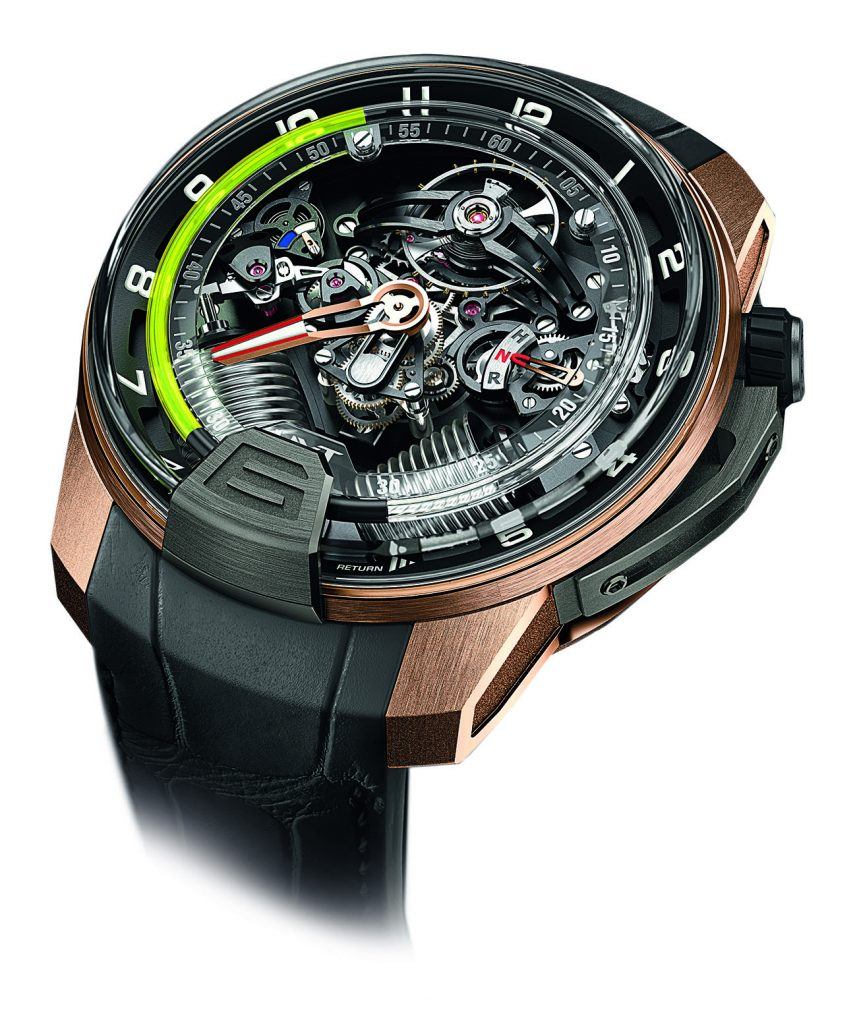
For the bellows, HYT went all the way to Philadelphia, to a company that works for NASA (Perriard won’t reveal its name). “It took so much time to find someone,” he says. The difficulty was coming up with a container that was perfectly water resistant but flexible enough so that it could be compressed by the watch movement.
The other problem component was the glass capillary. HYT finally found a supplier in Germany. “In Switzerland we couldn’t find a company that could bend the glass perfectly into a 360-degree shape without any micro-angles,” Perriard says. With these two exceptions, all the parts are Swiss-made.
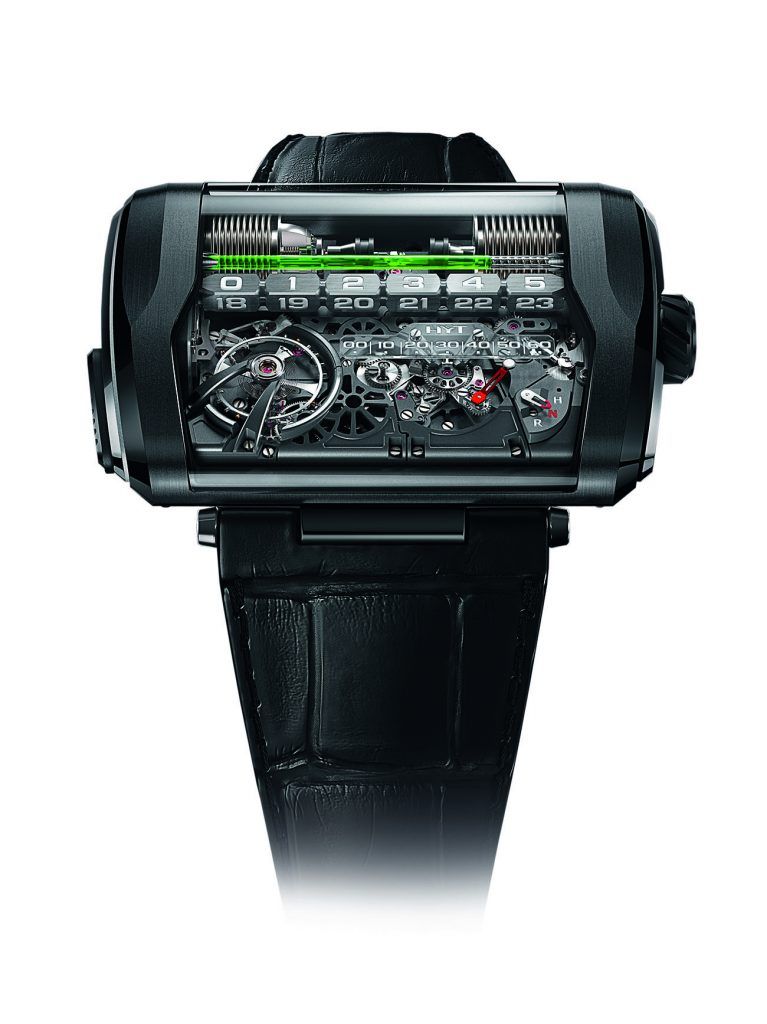
Finding components suppliers was just one problem. They then faced myriad others, Perriard says. For example: the transparent fluid in the module is oil; the colored fluid is water. It’s an axiom that oil and water don’t mix. When they’re shaken, though, they do, so vigorous motion, or simply the retrograde motion of the fluid as it returns to its starting point every 12 hours, could disturb the meniscus. Another hurdle: fluid sticks to glass, as you can see when you tilt a glass of wine and then turn the glass upright again. This resulted in tiny particles of green adhering to the inside of the tube. That problem was solved by applying a layer of a special coating to the glass. “I could speak about the challenges for three days, nonstop,” Perriard says.
Two years after HYT had started its project, the H1 was finished. The company had found suppliers for all their often oddball components and addressed all technical problems that might arise when the H1 went out into the real watch-wearing world. Or so they thought. The big debut at Baselworld 2012 resulted in a frenzy of demand: 750 to 800 orders, Perriard says. “It was absolutely insane.”
But two major technical glitches soon appeared. One was the effect of atmospheric pressure on the fluidic module: it was much greater than HYT had expected. Moving the watch from sea level up into the mountains could throw its time off by minutes. “We thought there would be no issue because we removed all the air from the oil and water and it makes sense that if there is no air in the system, it shouldn’t be affected by pressure. We didn’t realize there were micro bubbles of air that we had to remove,” Perriard says. The problem was relatively easy to fix: Preciflex developed a vacuum device that could remove every last bit of air from the system.
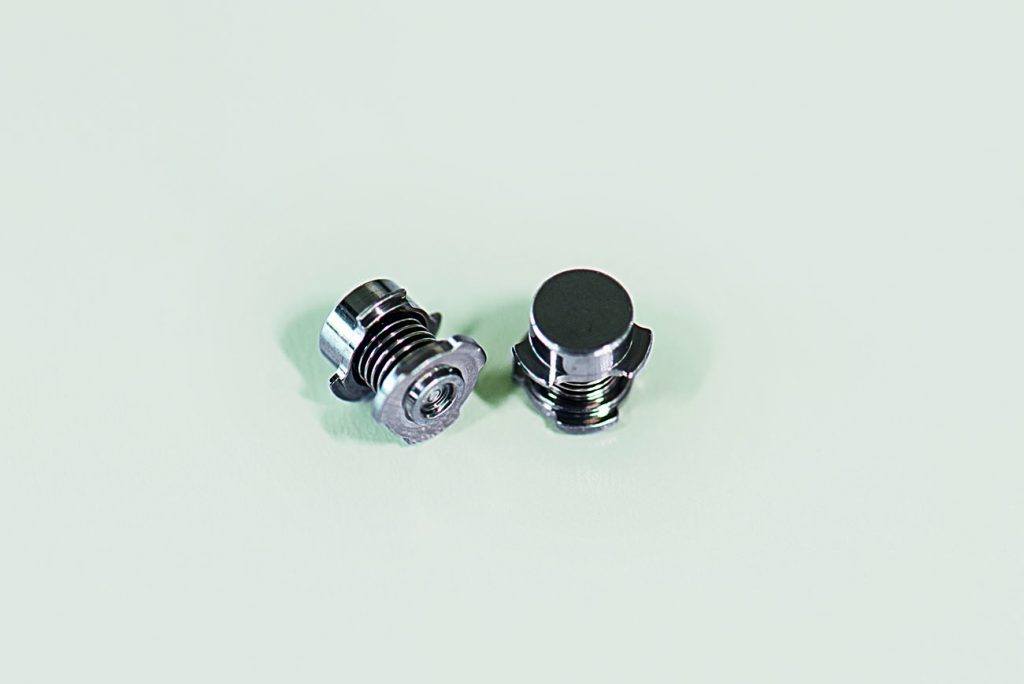
The second problem was the effect of temperature changes. They caused the liquids to expand or contract, pushing the meniscus off its correct position. Fixing this problem was harder: Preciflex had to invent a temperature-compensation mechanism, a tiny bellows filled with its own special liquid and placed inside one of the two larger bellows.


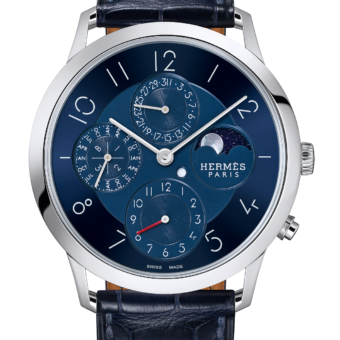
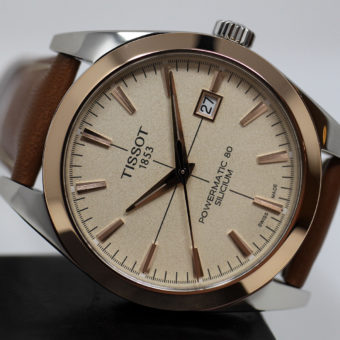
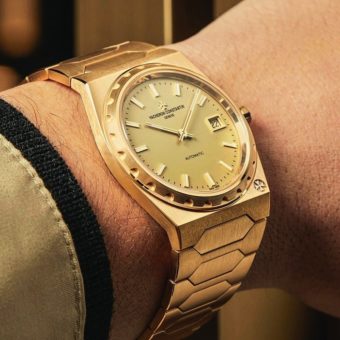
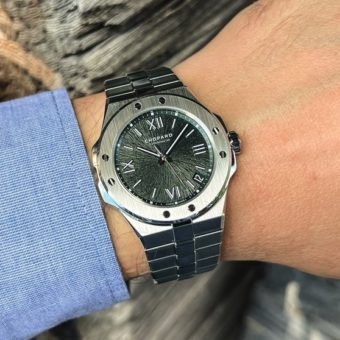

Enjoyed your fine write-up on HYT Watches along with the great pictures immensely.
Thanks Norma!
The design of this product is outstanding. The only question is, when you have a problem with the watch where do you send it an HOW much time might it take to get it fixed an back?. Thank’s.